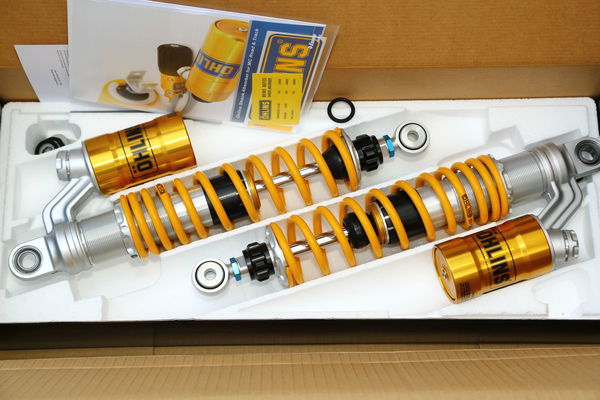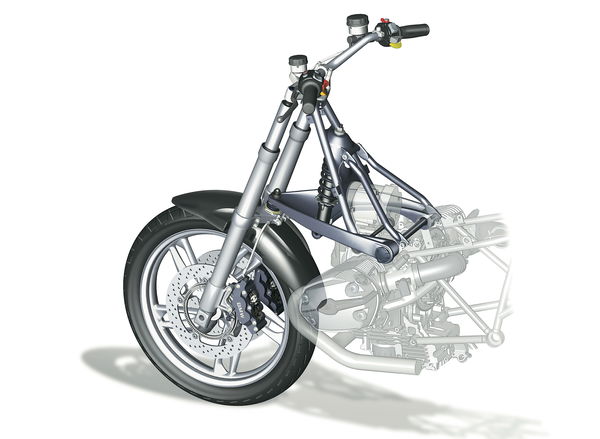How to… fit some auxiliary LED riding lights to your motorcycle
Let there be light

Words and pictures: Alan Dowds
THE long nights are drawing in, and if you're still commuting on the bike, then you're probably riding in darkness at both ends of the day. Trying to avoid the perils of the road is double-hard when you can barely see, and many motorcycles leave a lot to be desired in terms of pure lighting power. Many of the latest models now come with LED headlights which give loads of bright, pure luminance, but if you're riding an older bike, you're probably stuck with old halogen tungsten bulbs.
Unless you fit some aftermarket upgraded lights of course. These Denali lights are sold by R&G Racing in the UK, and make a good add-on riding light set-up. Here's how to fit them, in five easy steps…

1: Kit up
The Denali kits come in various forms – pairs of small pods, larger multi-LED setups and even whole replacement headlamp units. We're fitting a pair of the smaller D2 pods to a Hayabusa here, with a universal fitting kit which you can adapt to the fork bottoms. Other kits fit to the crash bars on adventure bikes, mudguard bracket or bottom yokes on naked bikes.
With universal fittings you might need to be a bit creative on your install. Here, we're using the outer fork pinch bolts, so we dug into our huge spare bolts tub for two bolts that are the same thread as the stock ones, but 10mm longer to fit with the mounting plates. MAKE SURE you use a suitable replacement: if the stock bolt is steel, use a steel replacement, never a weaker aluminium fastener. Bolt the mount plate on, then attach the Denali light pod, adjusting it so it's roughly pointing the right way. Now do the same on the other side.


The kit includes all the wiring you need for the install. Loosen the battery connectors (do the negative first), and slip the 12v power connectors into place, making sure you get the polarity correct. Neatly feed the power cable up towards the handlebars, keeping the wires away from hot engine or exhaust parts, and anywhere it can get chafed or crushed. Secure with a neat arrangement of cable ties, nicely trimmed.
Up at the handlebars, choose where you're installing the switch. We're just using a sticky pad to attach it onto the top yoke. Find a sheltered spot for the small control box and lamp connectors, and secure them with cable ties.
Now, we have 12v going into the wiring harness, but we need to make sure the lights only operate when the ignition is on. Denali uses a white sensor wire on the harness – when it sees +12v, then the system is active. There are two ways to do this: connect the white wire into a switched live feed from the sidelights, or tail light. Alternatively, connect it to the headlight main beam, so the lights will only come on when you flick high beam on.


This kit also has a dual-intensity function. The blue wire is a trigger for 'full' brightness, so you can either wire that into the high-beam circuit, to get maximum LED lighting when you use main beam, or you can simply connect it to the white wire, so you get full intensity all the time. If the blue wire isn't connected, you get the lower intensity all the time.
Next up, route the lamp cables from the pods up the fork legs. This needs to be done with care; poor installation here can wear the cables as the suspension moves up and down. We're cable-tieing the cables alongside the existing brake hoses and wheel sensor wiring: it's a neat, secure path to follow. Take the lamp cables up to the steering head area, and connect to the sub-harness – give the connectors a squirt with some multi-purpose lube, or waterproofing silicone grease for extra waterproofing.
Give all the routing a final once-over and make sure nothing can come loose or get damaged. Then turn the handlebars all the way to the stop both ways, to check nothing is impeding the steering.

Check the system all works as it should, refit any panels you may have removed, and replace the fuel tank. Now, check where the lights are pointing: you don't want them blinding oncoming cars. That's pretty dangerous, and could earn you a tug from the cops.
Park up a couple of bike lengths back from a wall or garage door, and check out where the light falls. Compare with your stock headlight for a guide to where you want the light pattern to lie. Adjust the lamps if needed – and you're done.


CLICK HERE FOR MORE VISORDOWN HOW-TO GUIDES.











